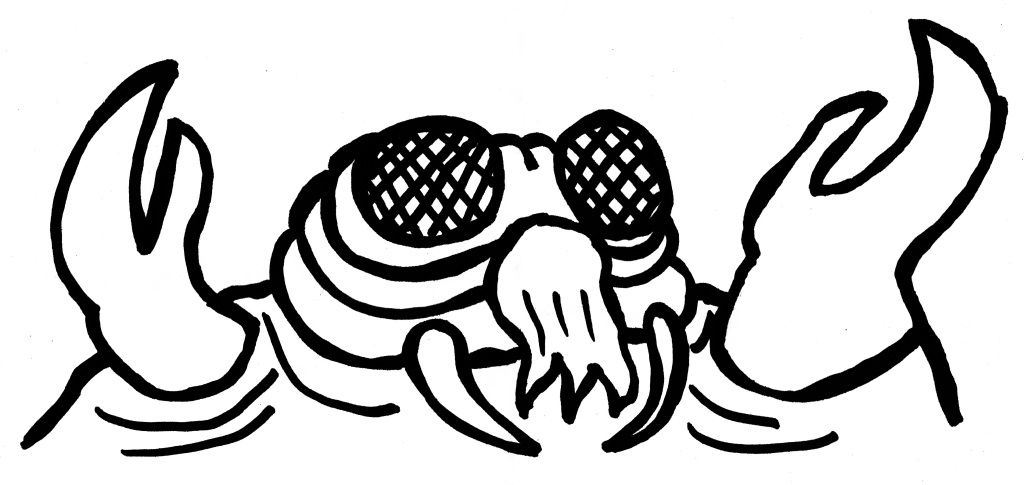Most children grow up with innate knowledge of the main-cast monsters in the Godzilla series, regardless of whether they’ve ever seen a Godzilla film. Names like Mothra, Ghidorah, Mechagodzilla, and Jet Jaguar really mean something to children, who extend their fascination with real-world dinosaurs to the fantastic monsters of classic Toho tokusatsu as if they were interchangeable. It isn’t until you’re older and learn the names of second-tier kaiju that the absurdity of that knowledge becomes apparent. The names Dogora, Atragon, Matango, Varan, and Gorath sound like AI-generated nonsense to anyone not obsessed enough with the genre to collect those lesser monsters’ action figures, but it’s only their general unfamiliarity that makes them ridiculous. Or that was at least my thought when I sat down to watch 1964’s Ghidorah, the Three Headed Monster for the first time and had to back away because I didn’t recognize one of the monsters billed on the poster. Godzilla, Mothra, Ghidorah . . . these names all mean something to me, but Rodan the Pteranodon (speaking of the fuzzy border between fictional kaiju and real-world dinosaurs) was entirely foreign. So, I took the time to get to know the winged beast before watching his official entry into the Godzilla canon.
Appropriately enough, the introduction of Rodan is as an Unidentified Flying Object that attacks jet fighter pilots who have no idea who he is either. The flying dinosaur travels at supersonic speeds and leaves sky trails in his path, playing into 1950s sci-fi audiences’ fascination with contemporary reports of UFOs. The answer to the mystery of his body is fairly straightforward; he’s an unearthed pterosaur who’s mutated to kaiju scale through radiation exposure – Godzilla-style. His mutant abilities can be surprisingly devastating, though, as he can flap his wings with enough force to create shockwaves & wind gusts that level entire cities in a manner of minutes. Since the monster design is a little unimaginative, it’s clear he needs help to carry the film along, so he’s joined in his debut by a race of giant bug larva with sword-sharp claws that slice people to death on the ground while Rodan attacks from the sky. The bugs are identified as mutated dragonfly larvae and assigned their own official kaiju name Meganulon, which is well-earned, given than they carry the first half of the movie on their exoskeletal backs before the mystery of Rodan is fully revealed to the audience. It turns out that even in his titular debut, Rodan was already presented as a second-tier monster and no threat to Godzilla’s reign as King to them all.
You obviously don’t need to know Rodan or Meganulon’s names to fully enjoy the Godzilla series. Only hopelessly nerdy completists would feel compelled to Do The Homework for a genre that’s mostly just pro wrestling matches in novelty rubber costumes. The only name you really need to know is Ishirō Honda, Toho’s go-to director for most of its tokusatsu classics. From the sincere post-war devastation of the original Godzilla to the groovy psychedelia of Space Amoeba, Honda was central to the invention & evolution of kaiju filmmaking in his three decades as a director. With Rodan, he hit the milestone of directing Toho’s first in-color kaiju picture, which makes for beautiful vintage pop art in its modern HD presentations, especially as the tactile monster costumes clash against the matte-painting vistas of the background. More importantly, Rodan is interesting as a tonal middle ground in Honda’s kaiju oeuvre. If you put aside the giant-bug attacks in the first hour, it’s a surprisingly grounded mining labor drama that’s just as grim as the original Godzilla. Mining-town workers are drowned, crushed, and sliced while their widows wail in agony, making the movie just as much of a political piece about working conditions as it is a pollution allegory. That dramatic sincerity can slow down the monster-action payoffs in the first hour, but it does make for a fascinating contrast with the screen presence of Rodan and his insect frenemies, who are too goofy to take 100% seriously.
I am choosing to accept Rodan‘s self-conflicting tone as a feature and not a, uh, bug. If it were made a decade later, it would’ve been pushed to a more cartoonish extreme to fully appeal to children, which might have robbed it of its interest as a volatile battleground for the sincere vs. silly sensibilities of early kaiju movies. Arriving just a couple years after the 1954 Godzilla, it’s an early sign of the goofier direction Honda and the rest of the genre would go while still maintaining the brutality and harsh political messaging of that original text. The least interesting aspect of Rodan, then, is likely Rodan himself, who only earns top bill by default. I doubt the film would’ve lost all that much if it were just about miners being attacked on the job by Meganulon, so it’s somewhat a shame that their name was pushed to the back pages kaiju history books alongside the likes of Ebirah, Baragon, Destroyah, etc. I’m never going to complain about getting a chance to see a flying dinosaur attack a miniature city, though, so count me among the dozens of nerds who are glad that Rodan was given his momentary spotlight.
-Brandon Ledet

